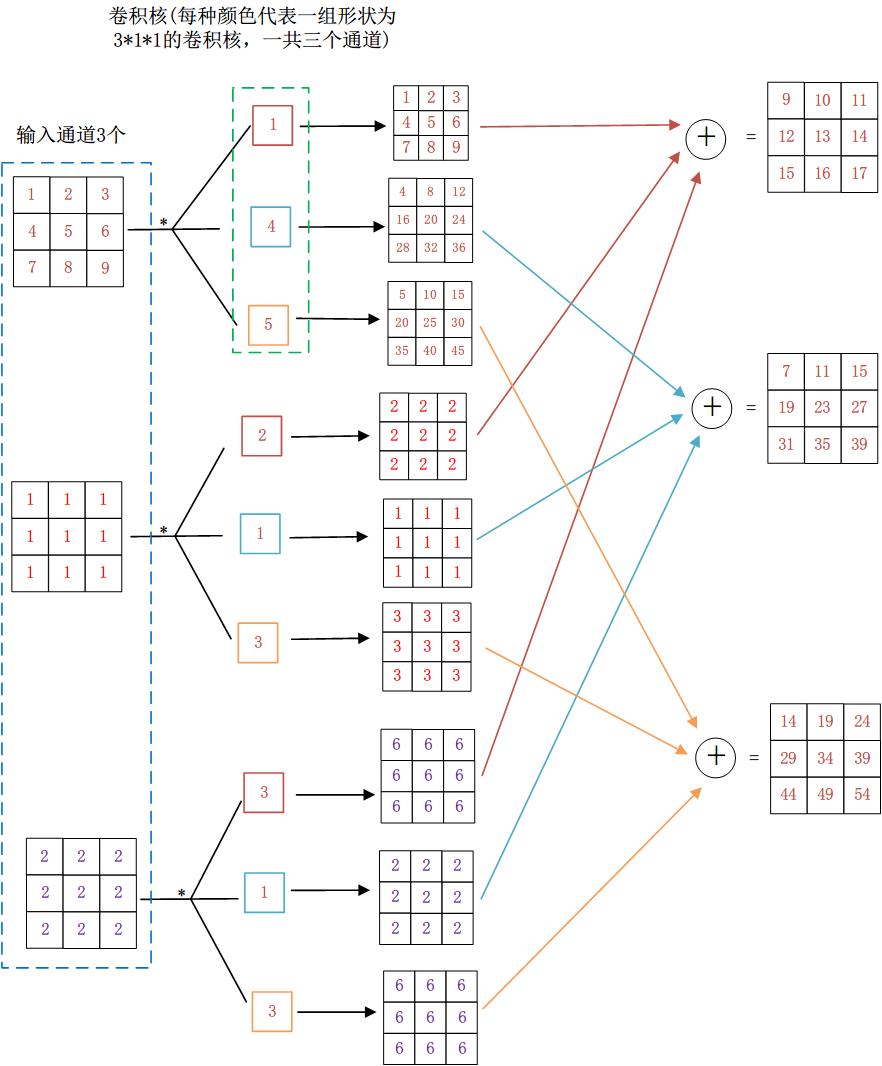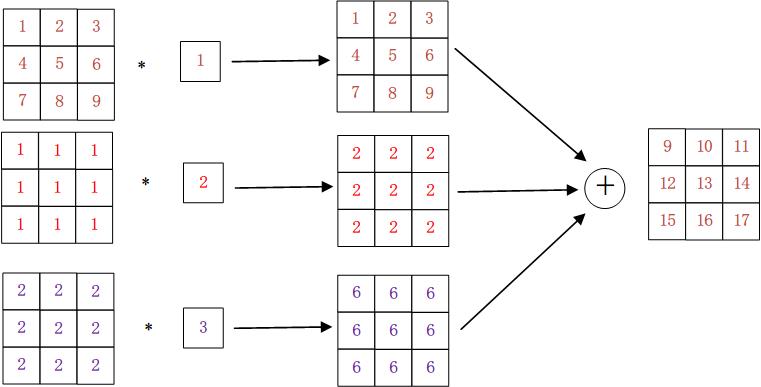卷积的理解 python代码实现 pytorch 多输入多输出通道的理解
Posted 有理想
tags:
篇首语:本文由小常识网(cha138.com)小编为大家整理,主要介绍了卷积的理解 python代码实现 pytorch 多输入多输出通道的理解相关的知识,希望对你有一定的参考价值。
ef corr2d(X,K):
h,w = K.shape
Y = torch.zeros(X.shape[0] - h + 1,X.shape[1] - w + 1)
for i in range(Y.shape[0]):
for j in range(Y.shape[1]):
Y[i,j] = (X[i:i + h, j: j + w]*K).sum()
return Y
def corr2d_mutil_in(X,K):
h,w = K.shape[1],K.shape[2]
value = torch.zeros(X.shape[0] - h + 1,X.shape[1] - w + 1)
for x,k in zip(X,K):
value = value + corr2d(x,k)
return value
X = torch.tensor([[[1,2,3],[4,5,6],[7,8,9]],
[[1,1,1],[1,1,1],[1,1,1]],
[[2,2,2],[2,2,2],[2,2,2]]])
K = torch.tensor([[[1]],[[2]],[[3]]])
print(K.shape)
corr2d_mutil_in(X,K)
Output:
tensor([[ 9., 10., 11.],
[12., 13., 14.],
[15., 16., 17.]])

X = torch.tensor([[[1,2,3],[4,5,6],[7,8,9]],
[[1,1,1],[1,1,1],[1,1,1]],
[[2,2,2],[2,2,2],[2,2,2]]])
K = torch.tensor([[[[1]],[[2]],[[3]]],
[[[4]],[[1]],[[1]]],
[[[5]],[[3]],[[3]]]])
print(K.shape)
输出:
torch.Size([3, 3, 1, 1])
def corr2d_multi_in_out(X,K):
return torch.stack([corr2d_mutil_in(X,k) for k in K])
corr2d_multi_in_out(X,K)
输出:
tensor([[[ 9., 10., 11.],
[12., 13., 14.],
[15., 16., 17.]],
[[ 7., 11., 15.],
[19., 23., 27.],
[31., 35., 39.]],
[[14., 19., 24.],
[29., 34., 39.],
[44., 49., 54.]]])
以上是关于卷积的理解 python代码实现 pytorch 多输入多输出通道的理解的主要内容,如果未能解决你的问题,请参考以下文章

